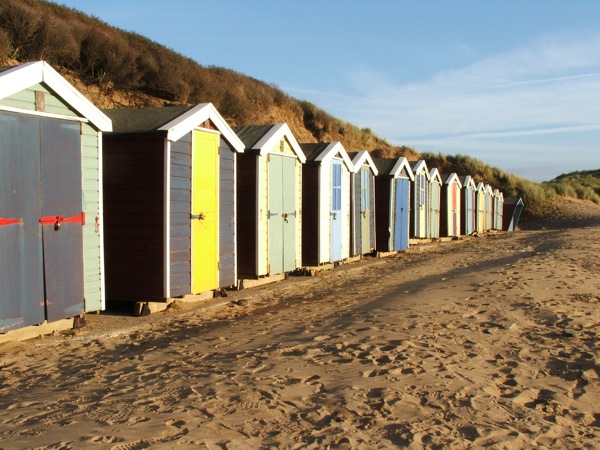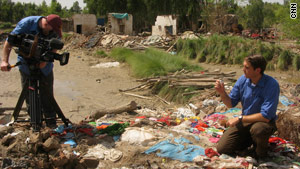Andy Griffin
Mariquita Farm
The Ladybug Letter
Padron is a town in Spain north of Portugal in Galicia on the Atlantic coast. I passed through Padron in 1993, and stopped for lunch, but I didn’t try their world-famous peppers. I was with Julia, and we were on our honeymoon. We shared a plate of sardines and a carafe of Albarino wine. I learned about the Pimiento de Padron the hard way, here in California in the fields, not on a cool, breezy restaurant patio by the Spanish seashore, and I lost money and burned my tongue off. If you’re a cook or gardener maybe I can help you to avoid making my mistakes.
padron peppersSpanish food is different than Mexican food and the Padron pepper is as instructive an example of the difference between the two cuisines as I can think of. When I finally figured out how to handle the Pimiento de Padron I took time to fry up a few platefuls in the classic Spanish tapas style for my Mexican workers so they’d understand how to pick and sort these peppers the way a Spaniard might. My workers smiled at my cooking demonstration and they ate the peppers willingly, but they assured they never did things this way back home in Michoacan.
When it comes to peppers, Mexican farm workers have the right to grin at the antics of Spanish chefs, or wanna-be Spanish chefs like me. Padron peppers, like all varieties of capsicum peppers, originally came from the New World, and a lot of them came from Mexico. Columbus promised his financial backers that he could sail across the Atlantic to India. When he made landfall he didn’t understand or accept that he’d encountered a new continent so the indigenous people he met were “Indians.” These “Indians” didn’t cultivate Piper nigrum which yields the familiar–and costly– black peppercorns that lured adventurers to the Indian coast, so the botanically unrelated, utterly dissimilar and wildly various pods of American Capsicum plants had to stand in as “peppers.” Pimienta means “pepper” in Spanish.
The town of Padron is on the banks of the Rio Ulla where it flows into the ocean. The citizens of Padron would have been among the first Europeans to see and experiment with these new “peppers” that the explorers brought back from overseas. Columbus’ ship, the Santa Maria, was even nicknamed Gallega, which means “the Galician.” As Spain’s new empire expanded across the Americas, Spanish sailors brought many different varieties of pimiento back home. Modern plant scientists have improved the pepper, but before Columbus was even born Native American farmers had already developed every basic form of pepper that we know today, from the large, sweet, and painless bell peppers to the tiny, incendiary chiltepin. The citizens of Padron adopted one particular variety out of all these newly arrived peppers to be their own “Pimiento de Padron.” Because Padron is near the sea and sailors were as common there as sand fleas, I think a waterfront bar tender had something to do with this.
The so-called “heat” in a hot pepper comes from a chemical called capsaicin. When a “hot” pepper is tiny and undeveloped its tender pod will contain little, if any capsaicin. Over time, as the pepper pod matures, capsaicin begins to concentrate in the developing seeds and internal ribbing membranes. One theory is that the pepper plant developed capsaicin as a deterrent to herbivores; if a deer or a squirrel eats a pepper they get a burning sensation in their mouth and remember to not to eat another one. Frankly, I don’t buy this notion; the pepper plant is smarter than that.
A pepper plant grows for quite a while before it flowers and fruits. The Padron peppers in your share box come from plants sown in the greenhouse in February and transplanted into the field in April. We’ve only just started the harvest, but already the plants are five months old and very few of the peppers pods are mature enough yet to have much heat at all. According to the “herbivore deterrence” theory these plants would be vulnerable for most of their lives and only develop their protective concentrations of capsaicin at the last minute. That’s stupid evolution. I think the pepper genus developed “heat” in order to provoke herbivores to eat them.
What “irritates” one person (or mouse) may excite another – and I have had many problems over the years with mice eating the dried chilies I’ve saved for seed. Humans save seeds for re-planting, and mice store seeds to eat that then get rained on and sprout, so by being “irritating” and getting eaten the pepper assures its propagation and survival. Of course not everyone likes spicy food, and hot peppers are not typical of Spanish cuisine.
Five years ago, when Chris Cosentino, the chef at Incanto, an Italian restaurant in the Noe Valley neighborhood of San Francisco, came back from a European trip, he brought me seeds of the Pimiento de Padron. “I can grow those,” I said. I remembered Padron. The weather in Padron is cool and temperate. The Gallegan landscape looks a lot like the Monterey Bay area, where I farm. “Any crop a Gallego can grow, I can grow better.”
My Padron peppers grew well. By September the plants were five feet tall and hung with gorgeous fire engine red peppers. I tried one. My eyes popped out of my skull and my tongue smoked. “You waited too long,” Chris said. “I can use a few of these to make dried pepper flakes, but that’s about it. Next year, pick them when they’re tiny.”
Gallegan farmers learned long before me that their favorite pepper gives a big yield of tender little peppers in early summer and that if you pick the plants clean, they’ll flower and set fruit again and again. Picking the peppers young and green creates early cash flow that allows a farmer to live until other crops are ready to harvest in August and September.
Gallegan cooks learned that the tiny, tender peppers are very flavorful, and rarely have much heat at all to them if they’re picked young enough. Only the older, firmer, heavier, waxier peppers are hot, and they learned to pick them out and set them aside. The cooks learned too that these new peppers could be cooked fast, in just a little more time than it takes to heat up a cast iron skillet. They’d get the pan hot, splash a little olive oil onto it, and when the oil was almost smoking hot, they’d toss on a handful of the tiny peppers. The peppers would hop and sizzle for a few seconds. When the peppers were blistered on one side, the cooks would shake the pan, toss the peppers, and let them blister on the other side. Then a quick sprinkle of sea salt, a deft sweep of the pan with a wooden fork, and the peppers were served, ready to eat, sweet, savory, salty, and piping hot.
But a Gallegan bartender’s is to sell drinks. They learned to put a little extra salt on the peppers. And Bartenders wouldn’t pick out the more mature peppers, either. A sailor bellies up to the bar, orders a bottle of cool Albarino wine, and grabs a handful of the fried peppers the bar maid had left within arm’s reach. The first ten or twelve peppers down the hatch are delicious; sweet, savory, salty, and piping hot. But the last one? “Hijo de la !@#$%,” it’s picante. So the sailor, his tongue burning, gulps his wine down and orders another bottle to extinguish the blaze. The bartender is happy to oblige.
True, a glass of cold milk works best to put out a pepper fire on the tongue, but what kind of self respecting sailor orders milk in a waterfront bar? Besides, even the spicy peppers taste great, especially after a couple of drinks. And so the reputation of these fried peppers spread out like a ship’s main sail and traveled the world. “You think your stale pretzels are good,” the sailors said to the bartenders of Boston, London, Lagos, and San Francisco. “You ought to cook up some pimientos like they do in Padron.”
copyright 2009 Andy Griffin || Gardeners who really like them should plant a few plants in their back yard. I get my seeds from Bill McKay at GrowItalian

Posted via email from eWaste Disposal and Recycling



































